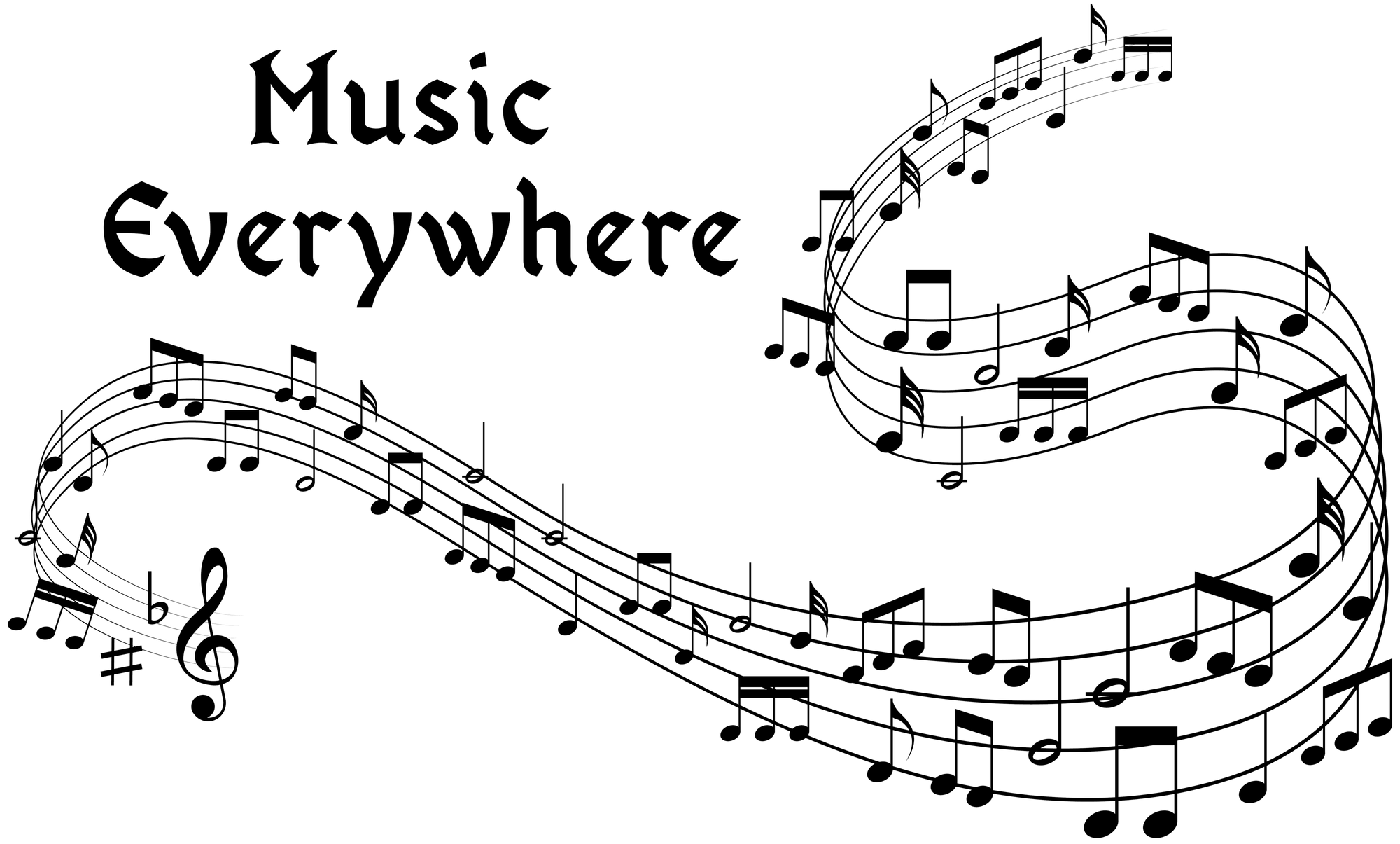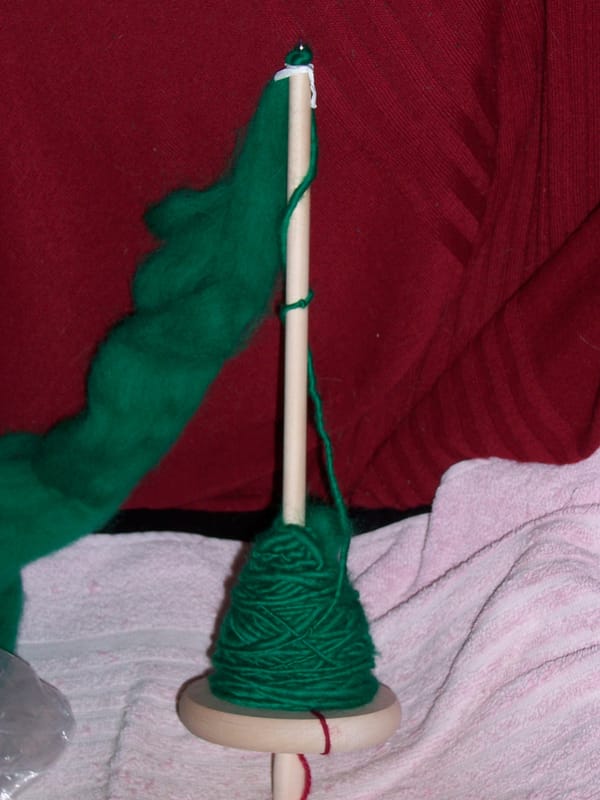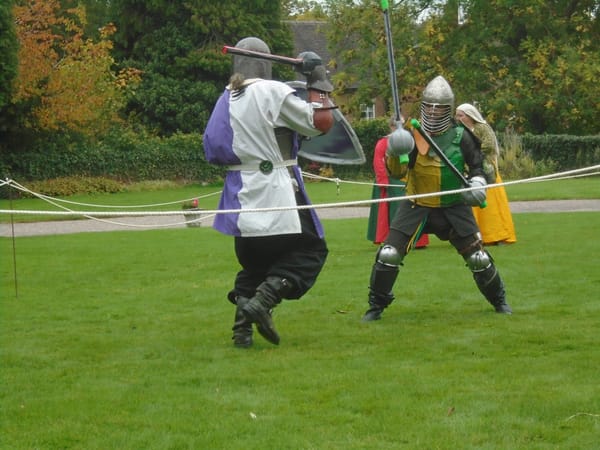750 Knitting Stitches
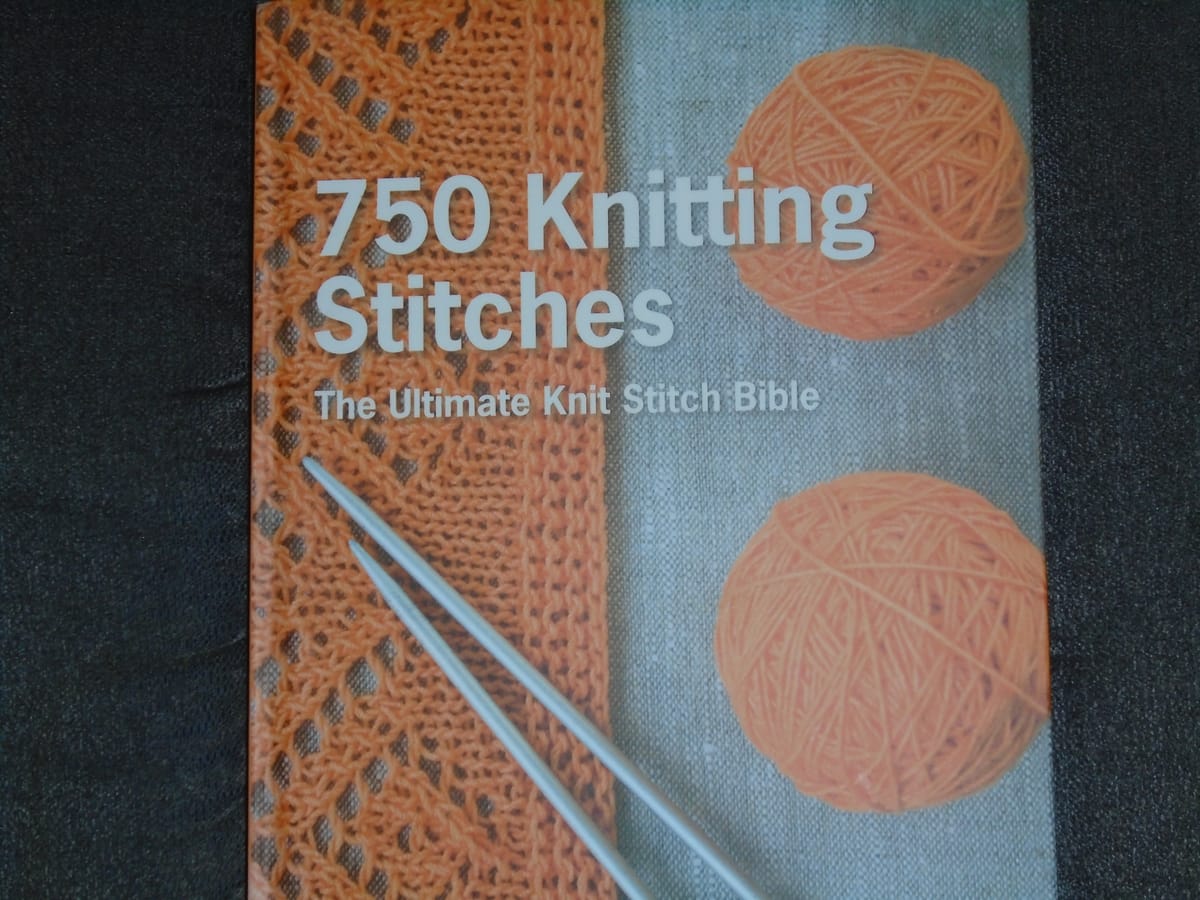
Last week I reviewed the one book you need to buy if you can already knit and you want to understand it in depth and take things further. Today I'm going to review the book to buy if you can't yet knit but you wish you could. (It's still a handy resource for more advanced knitters, though I must admit that normally if I know the name of a stitch I'll look for it online first. This book is most useful to me when I don't know the name of the stitch I want but I have a good idea of the kind of effect I'm after.)
So the very first thing this book does is to teach you the basics of knitting. Really only the basics - for instance, it tells you how to decrease by working two stitches together and that's it; something like skpo, for instance, you're expected to pick up as you go along once you know those basics. And, because I've been able to knit for decades, I never really looked at that section till I decided I was going to review the book, and this is what I found:
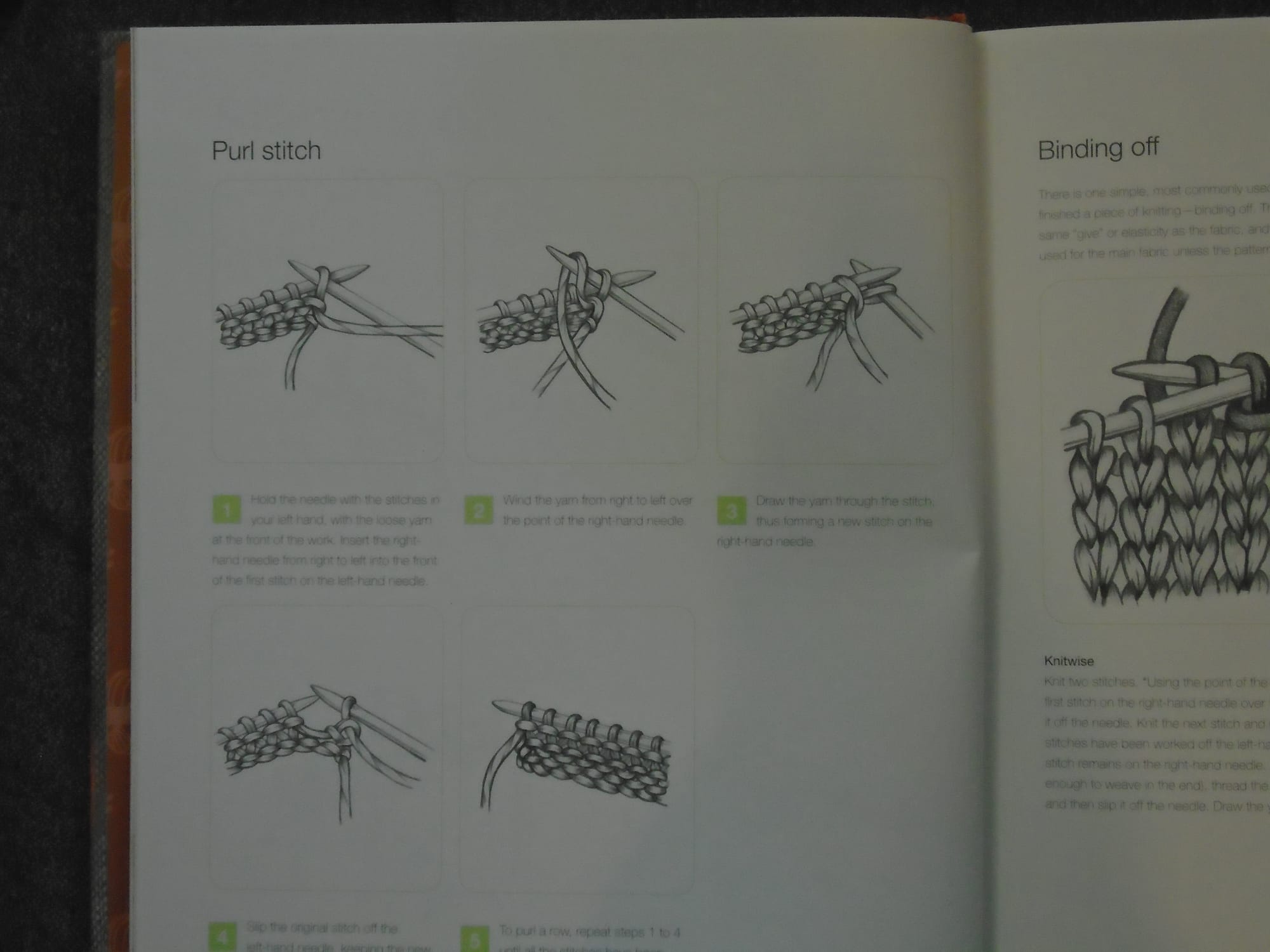
Bingo. Right here I have the answer to my question from the other day about stitch orientation. It's staring at me in diagram 2, which shows the yarn coming up in front of the needle and going down the back. My purls, while still perfectly cromulent purls, are the other way round; I take the yarn up behind the needle and down in front, so the stitch is aligned the other way. In fact, some folks who are more knowledgeable than I have kindly explained that what I'm doing is something called "combination knitting", and it's not an error but a valid technique. While it does make one or two things a bit awkward, I'm sticking with it, because having my knit and purl stitches sloping in opposite directions is really convenient almost all the time.
You will also have spotted something else about this book from the facing page. It says "binding off", not "casting off", so this book is American; as noted in the caption to the feature photograph, it is published by St Martin's Griffin, who are based in New York. I am very intrigued by St Martin's Griffin. I know very little about St Martin, and I certainly didn't know he had a griffin, let alone that it published knitting books. Anyway, the fact that the book is American is actually quite useful, because there are all these lovely clear photos, which means I'm able to translate. I wasn't quite sure what was meant by "seed stitch", for instance; was it a new stitch I didn't know, or was it just an American name for one I did? This book demonstrates incontrovertibly that the second one is true. It's American for moss stitch. Good to have that one cleared up.
So... let's say you have given this book to your child or grandchild, and now they can knit. The following pages will immediately deliver them from the tedium of endless garter stitch (which was what we did in infant school - purl was considered far too difficult until you had worked a number of long rectangular pieces of striped garter stitch with no particular use) and stocking stitch. There are five main sections. One covers stitches based on various combinations of knit and purl, maybe with occasional slip stitches, bobbles, that kind of thing. Here's a fairly representative sample:
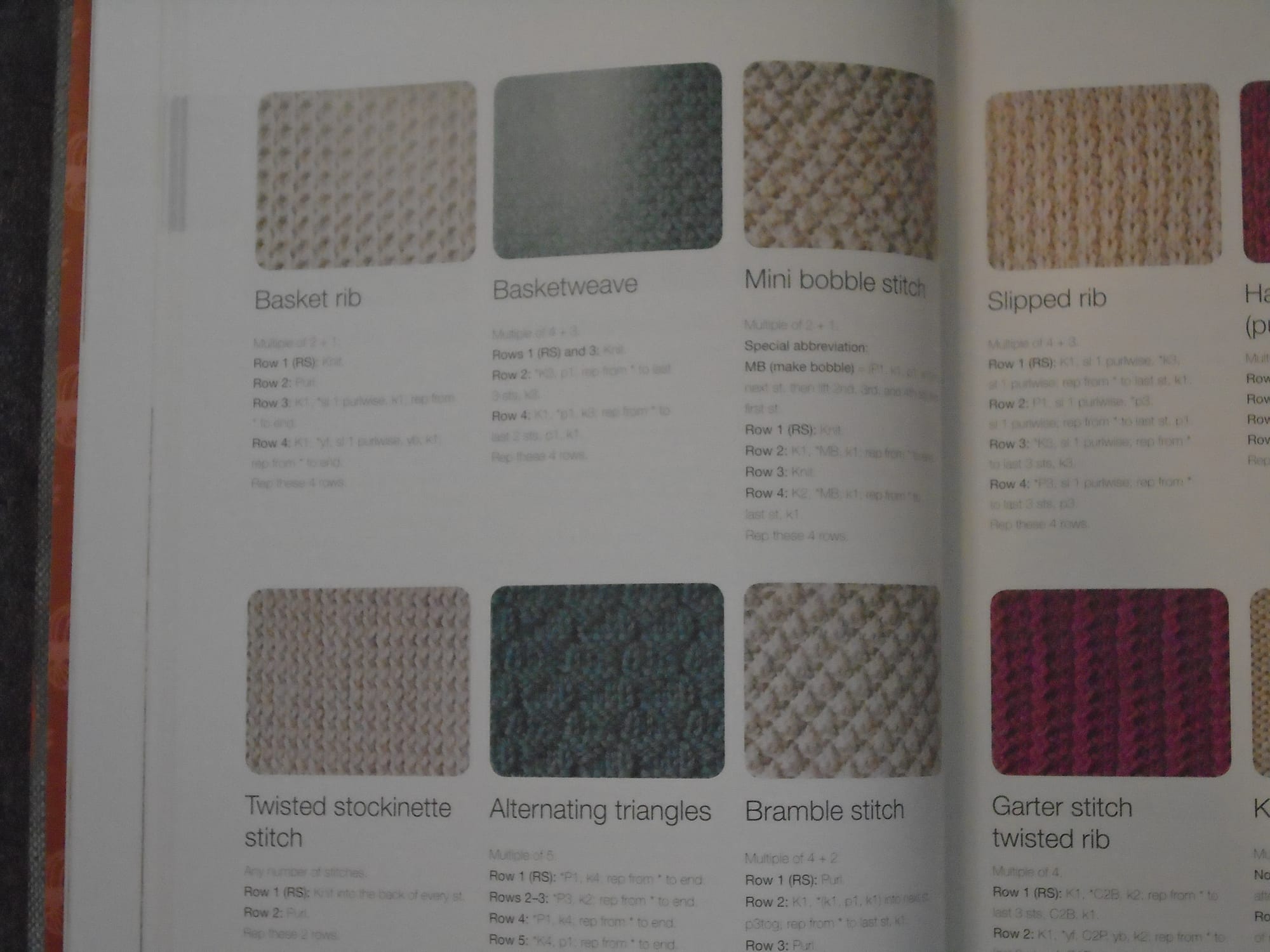
I'm fairly certain that what they call "bramble stitch" is blackberry stitch over here, and it was the main reason why I pulled out the book. I wanted something other than ribbing for the next pair of socks I knitted in the Footsie yarn, and I had an image of this stitch in my head but couldn't remember what it was called; but I knew which section it would be in, and so it was quick to find.
The next section is cable stitches, and there are very often fewer of these to a page as the instructions tend to be longer and more detailed:

Then there's a section on lace stitches. There's a bit of overlap between these two sections, as quite a few stitches have both cable and lace elements, so they tend to file them according to which is more dominant; on the whole, though, everything seems to be about where it should be, given that they've chosen not to have a separate section for this kind of stitch.
The next section is a bit of a cheat, because it isn't really stitches, as such; it's colourwork, and of course all of that is done on plain stocking stitch.
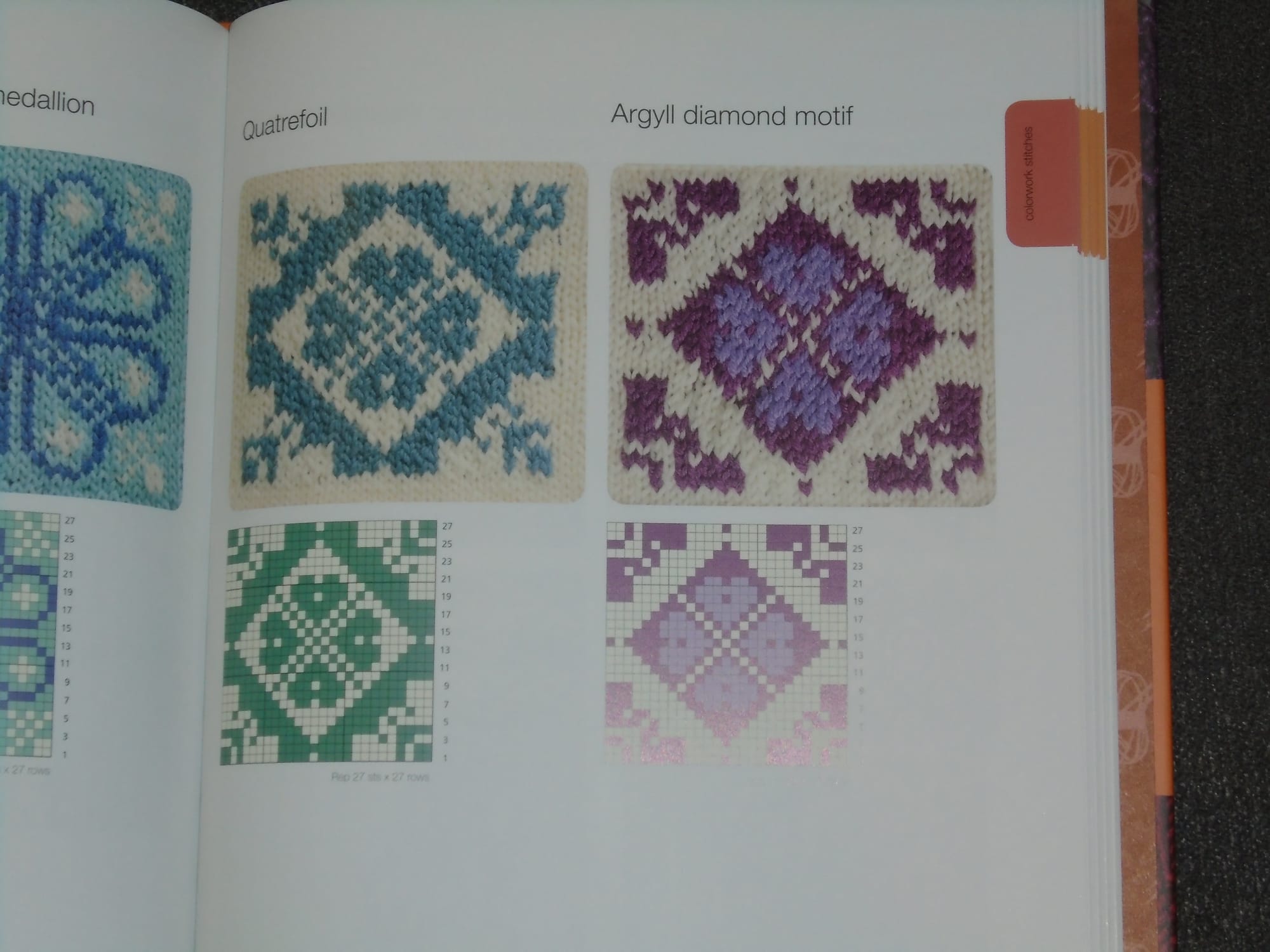
It's still a very useful resource, even if it doesn't technically count as "stitches". (Well, it is if you do colourwork, anyway. I've probably said it before, and no doubt I will again, that there is only one person in the world I'm prepared to knit Fair Isle for, and that person is not me.)
And, finally, there's a section on borders and edgings, and those come in such a wide variety that I despaired of getting anything like a reasonably representative photograph. Basically, though, there is a lot to go at. The person who wants to learn to knit can not only do it from here, but also never have to ask the question "what shall I knit now?"; so it's ideal for a child, but they will still be finding it very useful long after they grow up.
There is just one thing I'd have liked them to do which they don't, and that is to provide a tension comparison. I have another book which is entirely about cables (of course I do; I may end up reviewing that one too at some point), and the author very helpfully gives you not only the number of stitches in each cable, but also - and this is important - the number of stocking stitches in a piece the same width as the cable. (This works for any tension, since it's basically a division sum so the units vanish.) I would very much like this book to do that too, so that if you decide to swap in one of the stitches in the book for a section of stocking stitch, you know exactly how many stitches you need to make it the equivalent size without having to work your own tension swatch. I'll probably end up writing a few of them in - I'm never going to use all those stitches (after all, I don't like all of them; I don't suppose anyone will, but everyone will have some they really like).
I'm still wondering if St Martin's Griffin ate the author...
